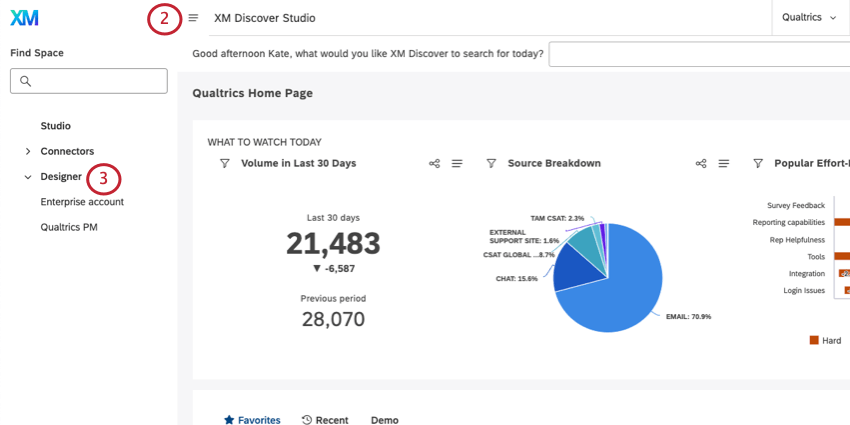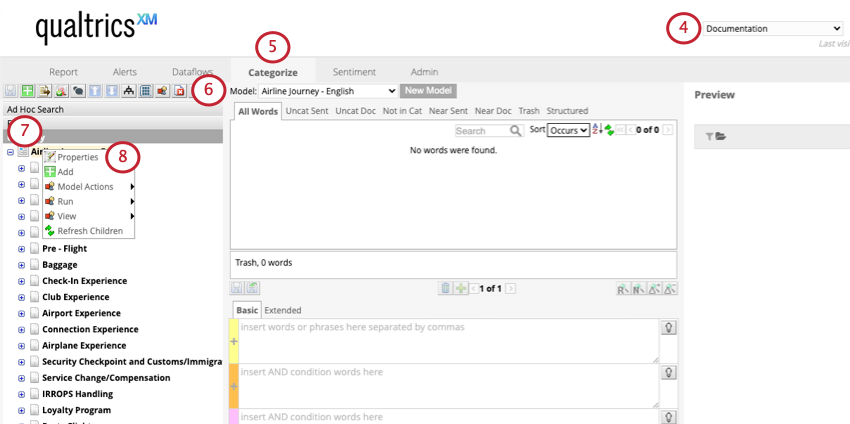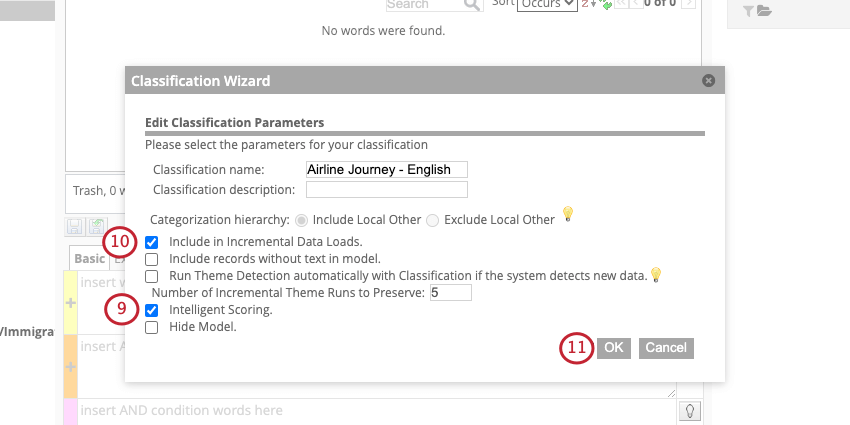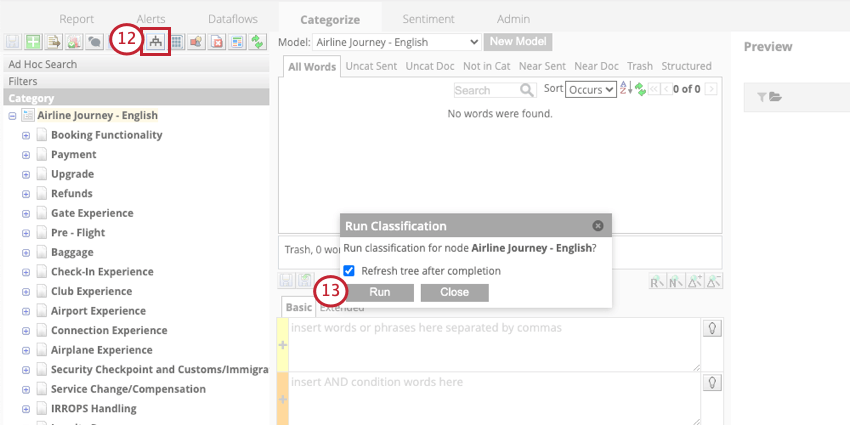Selecting a Scoring Model
About Selecting a Scoring Model
The first step in setting up intelligent scoring is selecting a category model to use for scoring.
Selecting a Scoring Model
For intelligent scoring, you can use a maximum of 10 category models per 1 project.
Any given topic (including its siblings and children) can only be used in 1 rubric. However, you can create multiple rubrics for each category model.
Category models used for intelligent scoring should not derive attributes from category-derived attributes or reference category-derived attributes in any way.
- Log into Studio.
- Open the global navigation menu.

- Select Designer.
Qtip: If you have access to more than one instance, select the instance you’d like to open.
- Make sure you’re in the correct project.

- Go to Categorize.
- Select a category model to use from the Model dropdown.
- Right-click the topmost (root) node.
- Select Properties.
- Select Intelligent Scoring.

- If desired, you can also select Include in Incremental Data Loads. This makes sure data is scored as it is added to XM Discover.
Qtip: Categorization hierarchy is always set to Include Local Other for intelligent scoring. This option makes sure that rebuttals work consistently.
- Click OK.
- At the top, click the Run Classification button.

- Select Run.
You can now create a rubric for intelligent scoring.
Editing Scoring Models
When you update the scoring model or the rubric based on it, the default behavior is to apply the new criteria moving forward. If you want to retroactively score historical data, you need to run the rescoring dataflow.
See Best Practices for Editing Scoring Models for more details.